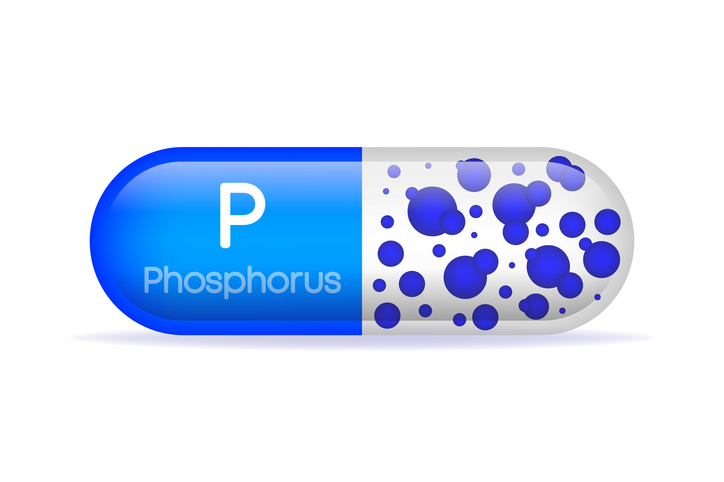Where Are You Getting Your Phosphorus From? It Matters

By Joy Stephenson-Laws, JD, Founder
Phosphorus is not really talked about much compared to other minerals such as potassium, sodium, calcium and magnesium. Nevertheless, phosphorus is still a mineral we all need. Phosphorus is the second most abundant mineral in the body (calcium is the first) and is mostly found in bones and teeth.
Phosphorus works with calcium to build strong bones and tooth enamel. It’s also a key ingredient in the recipe for energy-producing ATP (adenosine triphosphate) in your cells, which means this mineral is important for how your body stores and uses energy. It is needed to make proteins like the one responsible for the oxygen-carrying capabilities of our red blood cells, and it is needed to repair cells. Phosphorus also helps your body maintain a healthy pH level in the fluids that surround your cells, and plays a role in muscle contraction, the nervous system, cognitive health, hormonal balance and heartbeat regulation.
Where are you getting your phosphorus from?Phosphorus deficiency is quite rare in Americans, but a recent report made me realize it’s really important to be aware of what foods we are getting our phosphorus from and if we are, in fact, consuming too much based on what our health needs are.
The International Food Additives Council (IFAC) shared their findings from a study that analyzed dietary phosphorus intake over an extended period of time and how this influenced health and physiology. The researchers looked at intake of natural phosphorus (so this means phosphorus that is naturally found in foods. Some examples of these foods are dairy, red meat, chicken, legumes and nuts) among Americans between 1988-1994 and then 2015-2016. They found that American’s daily intake of natural phosphorus increased by 12 percent, and their daily intake of added phosphorus decreased by 13 percent.
“Phosphorus that has been added to food in the form of an additive or preservative (inorganic phosphorus) is found in foods such as fast foods, ready to eat foods, canned and bottled drinks, enhanced meats, and most processed foods,” reports the National Kidney Foundation.
So, obviously, you want to try to get your phosphorus from natural food sources as opposed to processed foods.
The study, which this Medical Xpress report discusses, “...found a higher total of phosphorus intake is associated with increased bone mineral content and bone density, a decreased risk of high blood pressure by 3%, and an increased risk of lowering levels of HDL-cholesterol (or "good" cholesterol) by 21% for every 100 milligrams of added phosphorus consumed.”
“Added phosphorus accounts for about 11.6% of total phosphorus intake among American adults ages 19 and over. The main contributors for added phosphorus are cheese, soft drinks, cakes, pies, cookies, and brownies.”
It’s best to get phosphorus from foods such as:
- Pumpkin seeds
- Chicken
- Eggs
- Fish (salmon is a really good source of phosphorus)
- Lentils
- Quinoa
- Sardines
- Asparagus
Keep in mind, the body better absorbs natural phosphorus from animal foods as opposed to plant-based foods.

Kidney disease and phosphorus intake
If you have kidney disease, you have to be especially mindful of your phosphorus intake.
“A major role of the kidneys is to maintain phosphorus homeostasis. High serum phosphorus has been linked to all-cause and cardiovascular mortality in chronic kidney disease (CKD) both before and after initiation of renal replacement therapy,” reports the National Institutes of Health (NIH).
People with chronic kidney disease (CKD) may have trouble maintaining phosphorus homeostasis, so they have to be especially mindful of their phosphorus intake and speak with their doctor or a competent healthcare professional.
When people are consuming processed foods and don’t recognize ingredients on food labels, they are mostly consuming artificial sources of phosphate. Look out for the following phosphate additives (per the National Kidney Foundation):
- Dicalcium phosphate
- Disodium phosphate
- Monosodium phosphate
- Phosphoric acid
- Sodium hexameta-phosphate
- Trisodium phosphate
- Sodium tripolyphosphate
- Tetrasodium pyrophosphate
What we can draw from all of this is that minerals matter, but it may also matter where you are getting your minerals from. Think about it. Both ice cream and broccoli contain calcium, but it is clear that broccoli is a much healthier source of calcium.
Finally, be sure to take routine nutrient tests in order to determine if your phosphorus (and other nutrient) levels are balanced. If there is an imbalance, a competent healthcare professional can work with you on making the necessary dietary changes or taking supplements if necessary.
Enjoy your healthy life!
Disclaimer: This article is not intended to provide medical advice. Please consult with your doctor or another competent healthcare practitioner to get specific medical advice for your situation.
The pH professional health care team includes recognized experts from a variety of health care and related disciplines, including physicians, attorneys, nutritionists, nurses, and certified fitness instructors. This team also includes the members of the pH Medical Advisory Board, which constantly monitors all pH programs, products, and services. To learn more about the pH Medical Advisory Board, click here.







